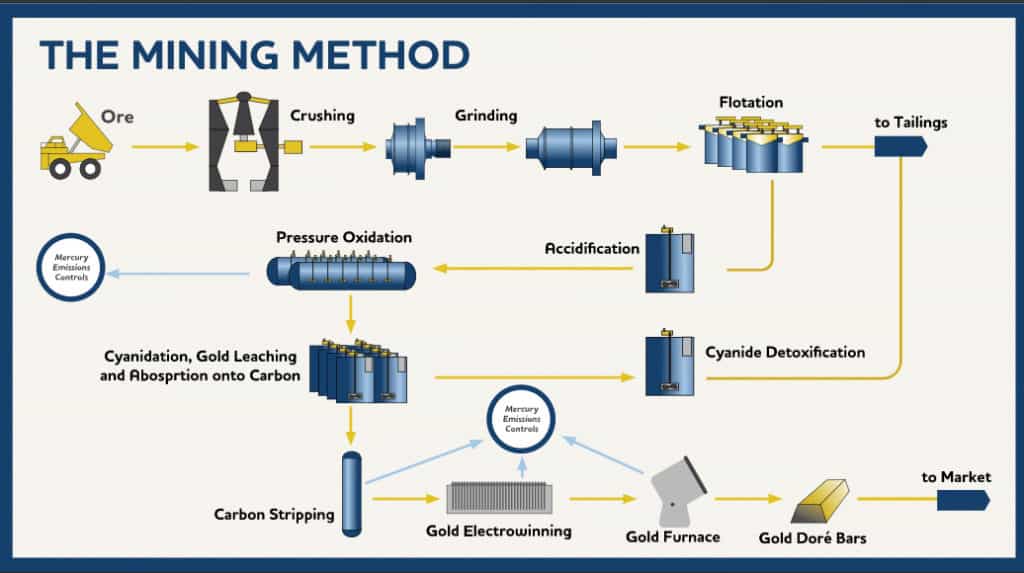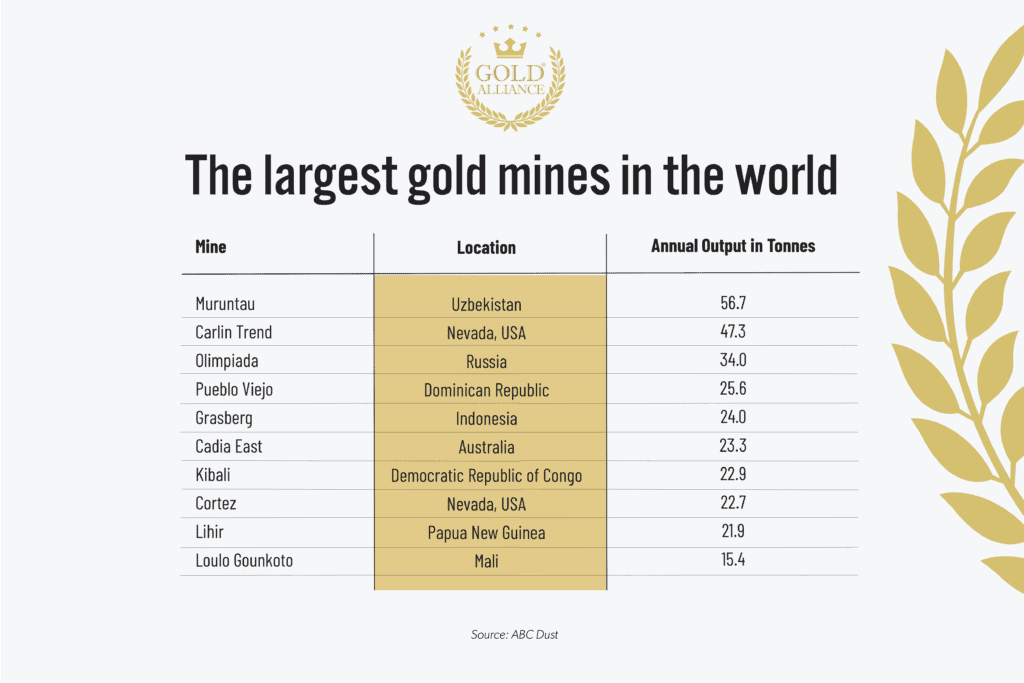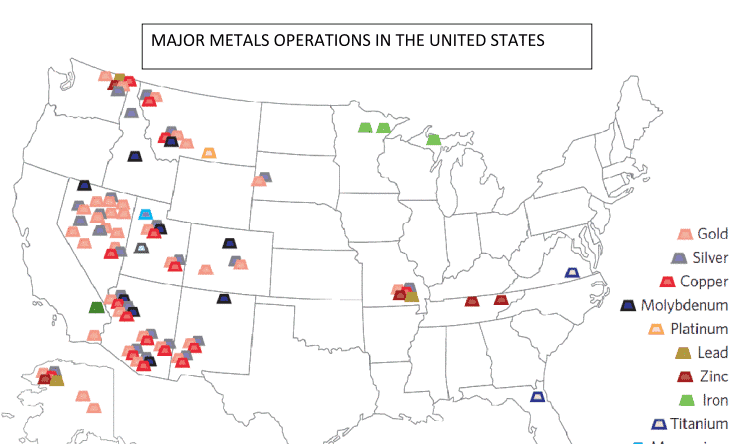
We all know that China is a growing power on the world stage. The US is still the biggest economy in the world, but The Red Dragon is catching up to us. China plays a fundamental role in world trade and in global economics. It’s also a huge player on the gold markets, and it seems like it’s using that position to hoard gold.
Here’s how China is building its gold reserves, what its agenda could be, and how it would impact us.
How gold is found and mined
According to the World Gold Council, the gold mining process can be boiled down to five complex stages.
Exploration
Gold can be found in mineral deposits all over the world. However, only around 10% of these deposits actually contain enough gold to justify the expenses of mining.
In order to determine whether a location is likely to produce enough of the metal to turn a profit, experts in geography, chemistry, geology, and engineering are called in to study the potential excavation site.
Development
Once it’s determined that a mine will produce sufficient amounts of gold to move forward commercially, the development stage can begin. This is where planning and construction for the new gold mine occurs, as well as procuring the proper permits to extract the precious metal.
Operation
Once the mine infrastructure is built, the Operation Stage can begin, which is the stage and time where gold is extracted from the earth.
Decommissioning
Once the gold ore is exhausted and the mine is no longer profitable to operate, the location will be decommissioned. This is a complex stage in the process that includes dismantling mine-specific infrastructure.
Post-closure
Once the mine has been decommissioned, the mining company still has responsibilities to the land and mine itself. Depending on the location where the gold was located, the company is responsible for the land between 5 and 10 years after the excavation site has been decommissioned. This includes rehabilitating and revegetating the land and returning environmental stability to the area.
Each of the stages in this process can be different based on the method of mining used. The image below shows an extraction method in which ore is crushed, ground, and oxidized to produce the sought-after metal.

Where gold is found in nature
Gold veins are found in ores in rock formation that can date all the way back to the Precambrian time (the earliest part of Earth’s history). Gold can be found as very small to microscopic particles embedded in rock and as flakes, grains, or nuggets.
Where gold is discovered, other minerals and metals are often found as well. Silver is usually found together with gold deposits.
Gold can also be found in our oceans, and it’s estimated that Earth’s oceans hold 15,000 tonnes of gold. Several projects have attempted to extract the valuable metal from seawater, but the concentration is too low to make it feasible at this point in time.
Where gold is found in the world
The precious metal can be found on every continent in the world, except Antartica. The map below shows the countries where the most gold is discovered.

The largest gold mines in the world
While gold is found all over the world, the largest gold deposits are found in Uzbekistan, the US, and Russia. Here are the 10 locations where it’s found the most in the world.

Muruntau, Uzbekistan
Located in the Qizliqum Desert of Uzbekistan, Muruntau is a unique mine because it’s the largest open-pit mine in the world. It is approximately 2.2 miles long by 1.6 miles wide and over 1,837 feet deep.
Carlin Trend, USA
The Carlin Trend mine system in Nevada is a belt of mines along a stretch that is approximately 35 miles long and nearly 5 miles wide, covering a huge area where the metal is found. This system produces “invisible gold” — gold that can only be detected through chemical analysis as it is microscopic. Despite being microscopic, this site produces around 45 tonnes of gold annually.
Olimpiada, Russia
Olimpiada is Russia’s biggest open-pit mine as well as its top-producing mine. It accounts for more than half of the region’s gold production with 34 tonnes per year.
Although these countries have the largest mines in the world, they don’t necessarily produce the most yield in the world. As a matter of fact, China is the country where gold is found the most in the world, but no single Chinese mining operation is among the 10 largest mines in the world. With an annual production of around 190 tonnes, the US is the fourth-largest producer in the world.
Where is gold found in the US?
The first gold in the US was discovered in 1799 in North Caroline when a 17-pound nugget was found. The famous “gold rush” began shortly after when more of the metal was found in Little Meadow Creek, NC. For the next 25 years, mines in North Carolina supplied all the domestic gold coined for currency by the US Mint in Philadelphia.
Since then, deposits have been found in nearly every state in the US. However, only a few of the states have enough supply to sustain large mining operations. The map below shows where gold mines are found in the US, along with other mining operations.

The largest gold mines in the US
The top-producing states are Nevada and Colorado, with Nevada producing 75% of the total gold output for our country. Nevada’s production is so extensive that it accounts for 3% of all gold ever mined.

Have we hit “peak gold”?
Over the past several years, gold production has been flattening, which could indicate that we may have hit the “peak.” This peak means that we have reached the maximum level of global gold extraction.

There are still areas where the precious metal is found, but most of the global production comes from operations that have been in use for decades. The “low-hanging fruit” has already been mined, and large deposits are becoming increasingly rare.
Consider South Africa: In 1970, this country was the global leader in gold production with over 1,000 tonnes, but the volume has rapidly declined since then, and South Africa isn’t even among the top 10 countries today. The flattening gold supply will be a reason for substantial price increases for gold in the next demand surge.
The post Where Gold Is Found and Which Locations in the World Have the Most appeared first on Gold Alliance.




